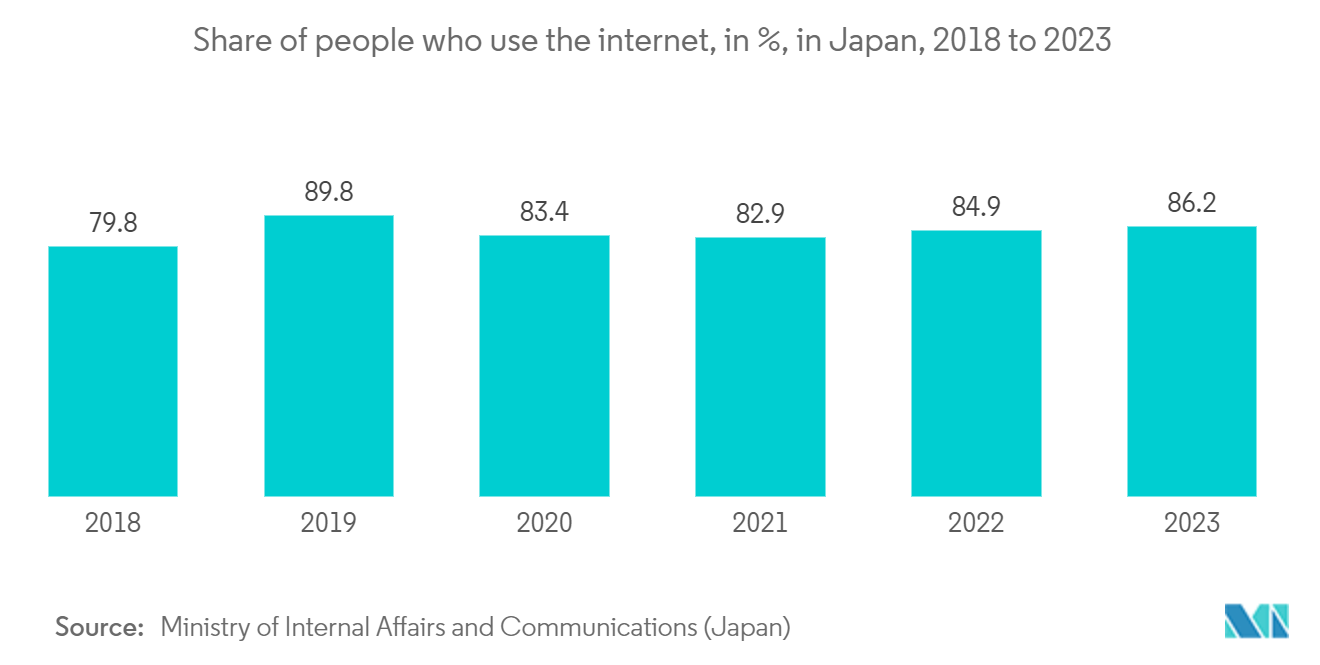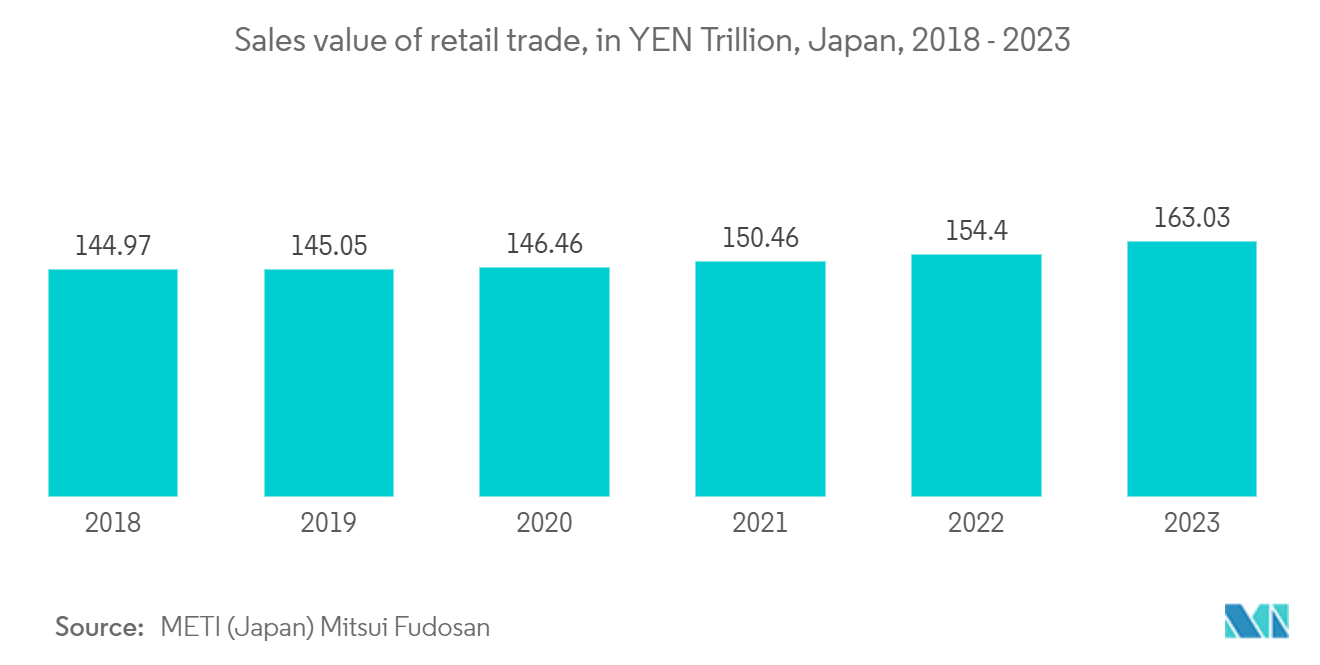Market Trends of Japan Payment Gateway Industry
Increased E-commerce Sales and High Internet Penetration Rate
- Japan's payment gateway market is witnessing robust growth, largely driven by a boom in e-commerce sales and heightened internet penetration. As more consumers adopt online shopping, the demand for secure digital payment solutions has surged. This e-commerce expansion, spurred by convenience, a wide array of product offerings, and competitive pricing, has pushed businesses to adopt advanced payment gateways to keep pace with these changing demands.
- In Japan, widespread internet access serves as a major driving force. This extensive internet usage fuels online shopping and accelerates the embrace of mobile payment solutions. With smartphones being the primary means of internet access, the surging popularity of mobile payments and digital wallets highlights the increasing need for advanced payment gateways supporting various transaction methods.
- As per the annual survey by the Ministry of Internal Affairs and Communications (Japan), in 2023, 86.2 percent of people in Japan accessed the internet, marking a slight uptick in the penetration rate from the year prior.
- Also, as more retailers and service providers move online, their reliance on payment gateways intensifies, ensuring customers have smooth and secure payment experiences. According to SurfShark, in the 2023 Digital Quality of Life Index, Japan scored 0.68.
- In May 2024, Rakuten Payment unveiled its strategy to unify its app, Rakuten Pay. Starting in December 2024, the initial phase will see the integration of Rakuten Pay, Rakuten Point card, and Rakuten Edy apps into a single platform. As Japan's point economy evolves, Rakuten Pay is solidifying its position as the entry point to a suite of Rakuten's fintech services.

Retail Sector to Witness the Significant Growth Opportunities
- With the expansion of Japan's retail sector, both in physical and online platforms, there's a notable surge in demand for secure digital payment solutions. This increasing growth pushes businesses to embrace advanced payment gateways, aligning with the rising preference for cashless transactions. Traditional retailers are integrating digital payment systems into their operations to offer consumers more convenience and flexibility. The adoption of contactless payment methods, QR codes, and mobile wallets in stores is becoming more prevalent, driven by the need to streamline transactions and reduce waiting times at checkout.
- Furthermore, retailers are increasingly adopting these technologies, driven by consumer demand for contemporary payment solutions and the Japanese government's initiative towards a cashless society. This trend is propelling growth in Japan's payment gateway market. Consequently, the retail sector's ongoing transformation is intricately tied to the country's rising embrace of payment gateway solutions.
- Japan's retail market is rapidly expanding, driven by urbanization, an extending middle class, and increased consumer spending. Considering these shifts, retailers are overhauling their payment processes, emphasizing convenience and security in digital transactions. At the core of this transformation are payment gateways, enabling secure online and in-store transactions. These gateways support various payment options, including mobile wallets, credit and debit cards, and other digital methods.
- Moreover, the retail sector's e-commerce boom is significantly influential. As online retailers multiply, the demand for versatile payment gateways intensifies. These gateways are expected to offer a variety of transaction methods, integrate effortlessly across platforms, and uphold stringent data security measures. Such capabilities are vital, especially with the increasing online shopping trend among the Japan consumers, particularly the younger, tech-savvy crowd. According to a survey by METI (Japan), in 2023, sales in the Japanese retail industry reached approximately YEN 163 trillion (USD 1.13 trillion), marking the highest figure in the last 15 years.


